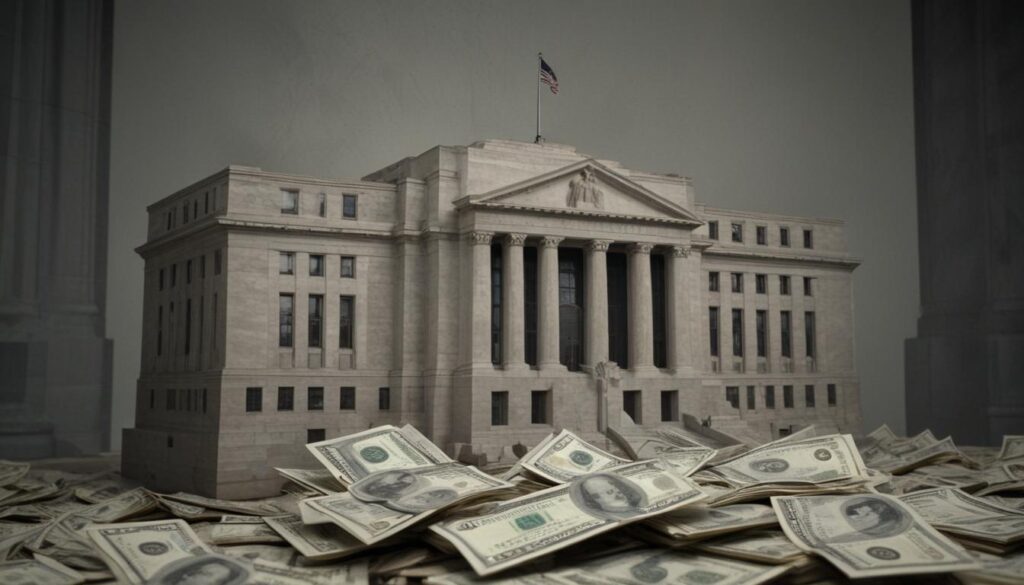Now Reading: How Fed Policy Impacts Your Investments
- 01
How Fed Policy Impacts Your Investments
How Fed Policy Impacts Your Investments

The Impact of Monetary Policy on Your Investments
Ever feel a knot in your stomach when the news anchor starts talking about the Federal Reserve? You hear terms like “interest rate hikes,” “inflation,” and “quantitative tightening,” and you immediately wonder what it means for your hard-earned money in your 401(k) or brokerage account. This confusion can lead to anxiety and the temptation to make reactive, emotional decisions with your portfolio, which rarely ends well. The good news is that you don’t need a PhD in economics to understand the fundamentals.
This article is your solution. We are going to demystify the world of monetary policy and translate the complex headlines into a clear, simple guide. By understanding how the decisions made by the central bank ripple through the economy and financial markets, you can gain the confidence to navigate market shifts. Instead of reacting with fear, you can approach your investment strategy with clarity and a long term perspective, turning complex news into a tool for better decision making.
What Is Monetary Policy Anyway
At its core, monetary policy is the set of tools used by a nation’s central bank to promote a healthy economy. In the United States, this job belongs to the Federal Reserve, often called “the Fed.” The Fed operates with a dual mandate from Congress to achieve two primary goals maximum employment and stable prices. “Stable prices” is just a formal way of saying they are responsible for keeping inflation under control, preventing the cost of everyday goods and services from spiraling out of control.
To achieve these goals, the Fed has a powerful toolkit. The most well known tool is the federal funds rate, which is the interest rate at which banks lend to each other overnight. By raising or lowering this key rate, the Fed influences all other interest rates in the economy, from your mortgage and car loan rates to the interest you earn in a savings account. Other tools include quantitative easing (buying bonds to inject money into the system) and quantitative tightening (selling bonds to remove money), which are used during more extreme economic conditions.
How Central Bank Decisions Affect Your Portfolio
The actions of the Federal Reserve don’t happen in a vacuum; they create powerful ripple effects that directly touch every corner of your investment portfolio. Understanding these connections is the key to interpreting market movements and positioning yourself strategically. Different asset classes react in unique, and often predictable, ways to shifts in monetary policy.

The Connection to Stocks
When the Fed raises interest rates to fight inflation, it generally acts as a headwind for the stock market. Higher rates make it more expensive for companies to borrow money to fund expansion, research, or new projects. This can squeeze profit margins and slow down future growth, making the company’s stock less attractive to investors. Furthermore, from a valuation perspective, higher interest rates mean that a company’s projected future earnings are worth less in today’s dollars, which can push stock prices down.
Conversely, when the Fed lowers interest rates to stimulate a sluggish economy, it often provides a tailwind for stocks. Cheaper borrowing costs can fuel corporate growth and boost profitability. Moreover, with lower returns available from safer investments like bonds and savings accounts, stocks become a more attractive option, driving capital into the market and pushing prices higher. This is why periods of low interest rates have historically coincided with strong bull markets.
The Connection to Bonds
The relationship between interest rates and bonds is one of the most direct in finance. There is an inverse relationship between interest rates and the price of existing bonds. Think of it like a seesaw when one goes up, the other goes down. When the Fed raises interest rates, newly issued bonds will come to the market with a higher interest payment, or yield. This makes your existing, lower yield bonds less desirable, so their market price must fall to compete.
On the other hand, if the Fed cuts rates, your existing bonds that pay a higher interest rate suddenly become much more valuable compared to the new, lower yield bonds being issued. As a result, investors are willing to pay a premium for your older bonds, and their price goes up. This is why investors often flock to bonds for safety when they anticipate that the central bank will begin cutting rates to support the economy.
Navigating the Market with Confidence
Understanding these mechanics is powerful, but it’s not a crystal ball. The key to successful long term investing isn’t about perfectly timing the Fed’s every move, but about building a resilient portfolio that can weather different economic cycles. The single most effective strategy for this is diversification. By holding a mix of assets—including stocks from different sectors, bonds of varying durations, and perhaps other assets like real estate or commodities—you reduce the risk of any single event derailing your entire financial plan.
Ultimately, your best defense against the anxiety caused by monetary policy headlines is to focus on what you can control. Maintain a long term perspective and stick to your investment plan, rather than making drastic changes based on short term news. Understand that periods of rising rates and falling rates are normal parts of the economic cycle. By staying informed, remaining diversified, and keeping your emotions in check, you can navigate the complex world of monetary policy not with fear, but with the confidence of a well prepared investor.



































